

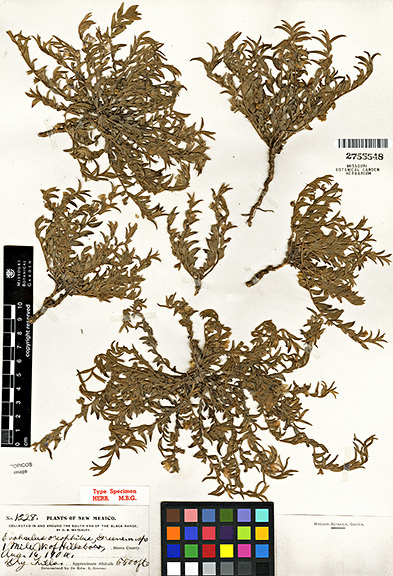
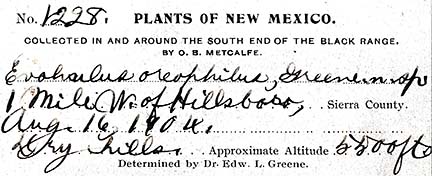
|
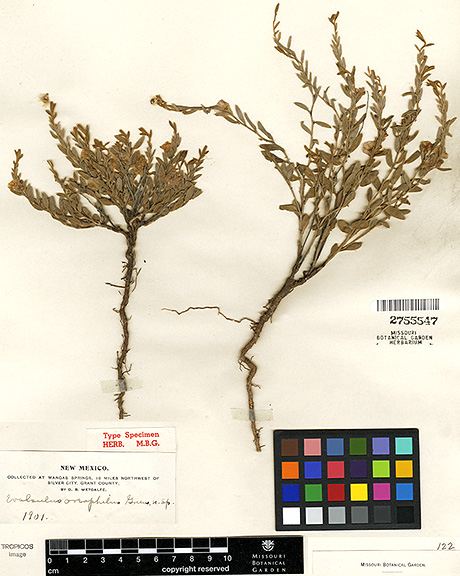
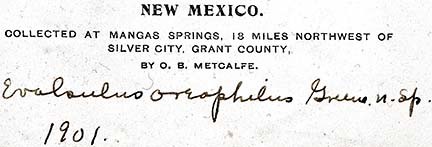
|
|---|
In 1905 E. L. Greene declared a new Evolvulus species E. oreophilus (Leaflets of Botanical Observation and Criticism. 1:151. 1905), the total description being:
Evolvulus oreophilus. Depressed and compact, the stems many from the subligneous branched crown of a thick tap-root, all floriferous from the base, densely leafy: leaves elliptic-oblong, sessile, acute, 1/2 inch long, canescent with a dense appressed silky pubescence: corollas purple, nearly 1/2 inch broad at full expansion, the pedicels very short, in fruit recurved. Dry hills west of Hillsboro, at 5,500 feet at base of Black Range, New Mexico, Aug. 1904, O. B. Metcalfe, n. 1228.
Greene's E. oreophilus has subsequently been treated variously as a synonym of:
The two MO collections above are both labeled "Type Specimens", but only the one on the left is O.B. Metcalfe 1228 with the correct date and locality. The righthand specimen is clearly not type material. The specimen on the left is E. sericeus*; that on the right (2755547) is not — it is E. nuttallianus. (They do not show annotation beyond the determinations by Greene as E. oreophilus.) The righthand specimen may be one reason that some authors synonymize E. oreophilus with E. nuttallianus, but use of this specimen as type material is clearly in error.
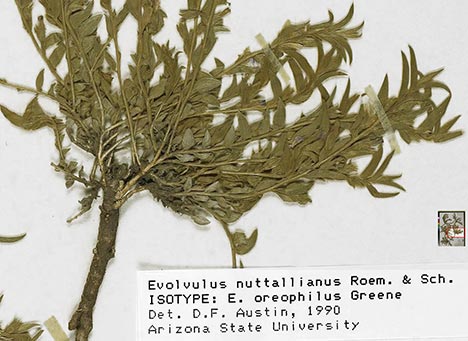
US [as determined by D.F. Austin] |
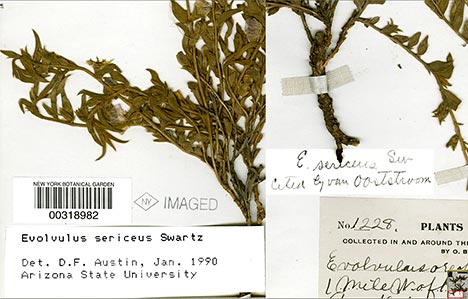
NY [as determined by D.F. Austin; the note about van Ooststroom of unknown origin] |
|---|
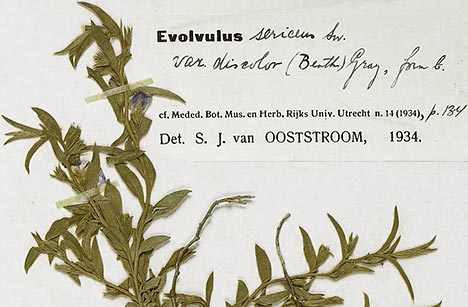
US [same sheet as above; as determined by S.J. van Ooststroom] |
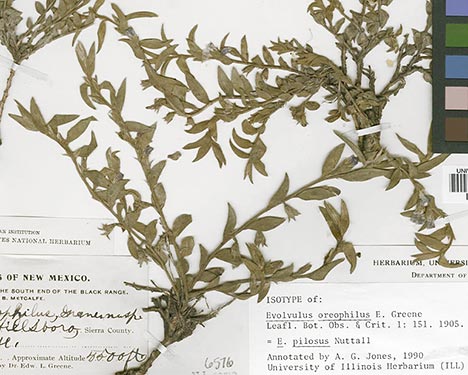
ILL [as determined by A.G. Jones] |
|---|
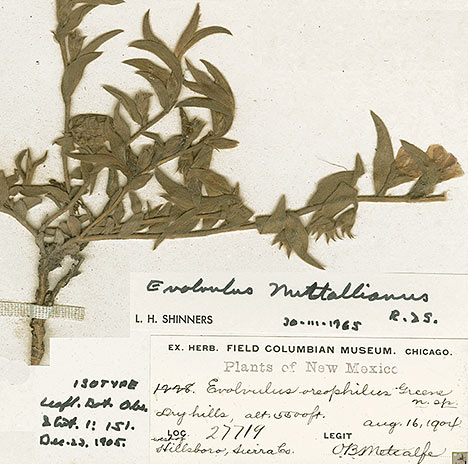
WISC [as determined by L.H. Shinners] |
|---|
* To simplify the presentation I have omitted ‘var. discolor’ and hold open the possibility that Greene's species may merit recognition.
1 Austin notes:
Specimens that were separated as E. oreophilus Greene were treated by Ooststroom (1934) as E. sericeus var. discolor form B. These are better treated as E. nuttallianus because of their habit, corolla shape and color and indumentum on both leaf surfaces.